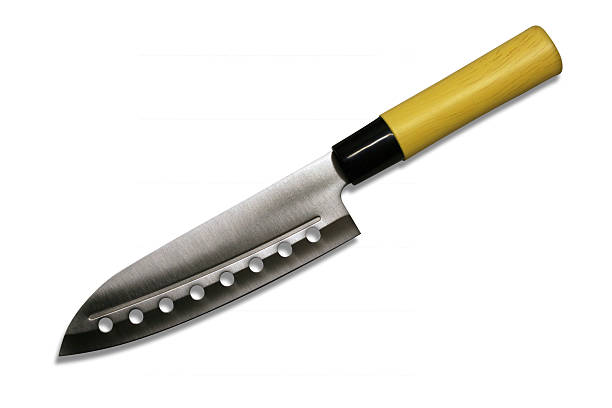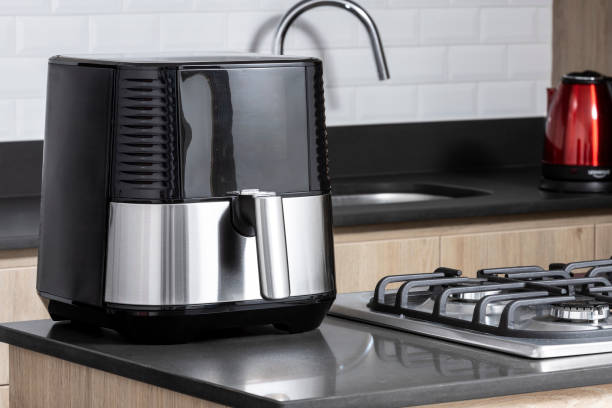Best Japanese Chef Knives

If you’re a culinary enthusiast or a professional chef, you understand that the right tools can elevate your cooking experience. Among the most revered tools in any kitchen are Japanese chef knives. Renowned for their precision, craftsmanship, and longevity, these knives are a testament to Japan’s rich culinary heritage.
In this guide, we’ll dive deep into the world of Japanese chef knives, exploring their unique characteristics, types, and top picks. Whether you’re a seasoned chef or a home cook, this comprehensive overview will help you make an informed decision.
What Makes Japanese Chef Knives Special?
Japanese chef knives stand out due to their meticulous craftsmanship and design. Here’s what sets them apart:
- Blade Construction: Many Japanese knives, like the Shun Classic 8” Gyuto, are made using traditional techniques, such as folding and layering steel, resulting in blades that are both sharp and durable.
- Edge Retention: The high-quality materials used, like VG-10 steel, ensure that the knives maintain their sharpness longer, reducing the frequency of sharpening.
- Balance and Weight: Japanese knives such as the Global G-2 Chef’s Knife, often have a lighter, more balanced feel, allowing for precision cuts and reducing hand fatigue during prolonged use.
- Aesthetic Appeal: The beauty of Japanese knives is undeniable. From the intricate Damascus patterns on the Yoshihiro VG-10 Gyuto to the polished handles, these knives are as much a work of art as they are a tool.
Types of Japanese Chef Knives
Understanding the different types of Japanese knives is crucial to selecting the right one for your needs. Here’s an overview:
Gyuto – The Japanese Chef’s Knife

Often compared to the Western chef’s knife, the Gyuto is versatile and can handle a variety of tasks, from slicing meat to chopping vegetables.
Key Features:
- Blade Length: Typically between 180mm and 270mm.
- Blade Shape: Slight curve, allowing for a rocking motion.
- Ideal For: Meat, fish, and general-purpose chopping.
Check out the Shun Classic Gyuto 8” for a premium option.
Santoku – The All-Purpose Knife

The Santoku, meaning “three virtues,” is designed for slicing, dicing, and mincing. Its flat edge makes it perfect for precise cuts.
Key Features:
- Blade Length: Usually around 165mm.
- Blade Shape: Flat with a sheep’s foot tip.
- Ideal For: Vegetables, fish, and boneless meats.
Explore the Yoshihiro VG-10 Damascus Santoku.
Nakiri – The Vegetable Knife

With its straight edge, the Nakiri is designed for chopping vegetables. Its rectangular shape allows for full contact with the cutting board.
Key Features:
- Blade Length: Typically 165mm.
- Blade Shape: Rectangular with a straight edge.
- Ideal For: Vegetables and herbs.
Deba – The Heavy-Duty Knife
The Deba is a robust knife used primarily for filleting fish and cutting through small bones.
Key Features:
- Blade Length: Ranges from 150mm to 300mm.
- Blade Shape: Thick spine with a single bevel.
- Ideal For: Fish, poultry, and small bones.
Yanagiba – The Sashimi Knife
The Yanagiba is a long, slender knife used for slicing raw fish. Its single bevel ensures clean, precise cuts.
Key Features:
- Blade Length: Typically between 240mm and 300mm.
- Blade Shape: Long and thin with a single bevel.
- Ideal For: Slicing sashimi and sushi.
Look into the Konosuke Yanagiba.
Key Factors to Consider Before Buying
When investing in a Japanese chef knife, consider the following factors:
Blade Material & Hardness
- Carbon Steel: Known for its sharpness and ease of sharpening but requires regular maintenance to prevent rust.
- Stainless Steel: More resistant to corrosion but may not achieve the same level of sharpness as carbon steel.
- VG-10 Steel: A high-carbon stainless steel that offers a balance between sharpness and durability .
Handle Type
- Western Handles: Typically heavier and made from materials like plastic or composite.
- Wa Handles: Traditional Japanese handles made from wood, offering a lighter feel and better balance.
Weight & Balance
The weight and balance of the knife should feel comfortable in your hand. For a great balance, consider the Shun Premier series. A well-balanced knife reduces fatigue and allows for more precise cuts.
Edge Retention & Sharpness
A sharp edge is essential for clean cuts. Look for knives with high-quality steel that retains its edge well.
Maintenance Needs
Japanese knives, especially those made from carbon steel, require regular maintenance, including sharpening and oiling to prevent rust.
Price vs. Quality
While high-end Japanese knives can be expensive, they often offer superior performance and longevity. Consider your budget and how often you’ll use the knife.
User Expertise Level
Beginners might prefer knives like the Tojiro DP Gyuto that are easier to maintain and sharpen, while professionals may opt for high-performance knives that require more care.
Top Picks: Best Japanese Chef Knives
Here are some top-rated Japanese chef knives:
1. Shun Classic 8” Gyuto

- Key Specs: VG-MAX steel core with 34 layers of stainless Damascus cladding.
- Pros: Exceptional sharpness, beautiful Damascus pattern, comfortable D-shaped handle.
- Cons: Requires regular maintenance to maintain sharpness.
- Ideal Use-Case: Versatile use in professional kitchens.
2. Yoshihiro VG-10 Damascus Gyuto

- Key Specs: VG-10 steel core with 46 layers of Damascus cladding.
- Pros: Excellent edge retention, stunning design, ergonomic handle.
- Cons: Higher price point.
- Ideal Use-Case: Precision tasks in fine dining establishments.
3. Global G-2 Chef’s Knife

- Key Specs: Cromova 18 stainless steel, ice-tempered.
- Pros: Lightweight, well-balanced, easy to maintain.
- Cons: Handle design may not suit all users.
- Ideal Use-Case: Everyday use in home kitchens.
4. MAC Professional Hollow Edge

- Key Specs: High-carbon stainless steel, 2mm blade thickness.
- Pros: Sharp out of the box, excellent value for money.
- Cons: Blade may require frequent honing.
- Ideal Use-Case: Budget-friendly option for home cooks.
5. Tojiro DP Gyuto

- Key Specs: VG-10 core with a stainless steel cladding.
- Pros: Affordable, great sharpness, excellent for beginners.
- Cons: Less premium fit and finish than more expensive options.
- Ideal Use-Case: Perfect for home cooks looking to upgrade to a Japanese blade without breaking the bank.
Best Budget Japanese Chef Knives
You don’t need to spend a fortune to enjoy the precision and artistry of Japanese cutlery. These budget-friendly options are ideal for beginners and casual cooks.
1. Tojiro DP Gyuto (Again!)
We’ve mentioned the Tojiro DP Gyuto already, but it deserves another spotlight here. It consistently ranks as the best value knife thanks to its durable VG-10 steel and excellent sharpness.
2. Kai Wasabi Black Santoku

- Blade: Daido 1K6 high-carbon stainless steel
- Pros: Durable, budget-friendly, stylish black handle
- Cons: Not as refined as premium options
3. Mercer Culinary Genesis Santoku

- Blade: High-carbon German steel (Japanese-style shape)
- Pros: Inexpensive, ergonomic handle
- Cons: Not true Japanese steel
High-End / Professional Japanese Knives
For serious chefs, investing in a high-end knife pays dividends in performance, comfort, and longevity. These are the Rolls-Royces of the knife world.
1. Masamoto KS Wa-Gyuto

- Blade: White #2 carbon steel
- Pros: Razor-sharp edge, beloved by sushi chefs, amazing feel
- Cons: Requires skill and frequent maintenance
- Price: $$$$
2. Takamura R2 Damascus Gyuto
- Blade: Super-hard R2 powdered steel
- Pros: Incredible edge retention, beautiful Damascus pattern
- Cons: Rare and pricey
- Price: $$$$
3. Konosuke HD2 Gyuto
- Blade: Semi-stainless HD2 steel
- Pros: Lightweight, sharp, elegant design
- Cons: Semi-stainless needs occasional upkeep
- Price: $$$–$$$$
Where to Buy Authentic Japanese Chef Knives
When buying a Japanese knife, authenticity matters. You want craftsmanship, not counterfeits. Here’s where to shop:
1. Specialty Retailers (Online & Physical Stores)
- ChefKnivesToGo – Trusted source for artisan blades.
- Japanese Knife Imports – Excellent curation and service.
- Knifewear – Based in Canada, great educational content and selection.
- Tosho Knife Arts – Boutique with high-end options.
- Korin – NYC-based Japanese culinary specialist.
2. Amazon (with caution)
Look for:
- Verified sellers
- Real reviews (watch out for generic ones)
- Manufacturer or brand warranties
3. Direct from Japan
- Sites like Rakuten or Amazon Japan offer deals if you’re comfortable navigating Japanese-language websites or using a proxy service.
Conclusion
After using a Japanese chef knife for the first time, I remember thinking, “Why didn’t I do this sooner?” The way it sliced through onions with barely any effort…it felt like a revelation.
Here’s a quick recap of why these knives are truly special:
- Unparalleled sharpness and precision
- Superior craftsmanship passed down through generations
- Versatile styles for every kitchen task
- Beauty and utility combined in a single tool
Whether you’re just starting your culinary journey or refining your skills as a seasoned chef, a Japanese knife is more than just a blade. It’s a partner in your kitchen.
What’s your favorite Japanese chef knife? Let us know in the comments below. We’d love to hear your thoughts, tips, and recommendations!
* Voyedy may receive compensation for purchases made at participating retailers linked on this site. This compensation does not affect the products displayed or their order. Learn more here.





